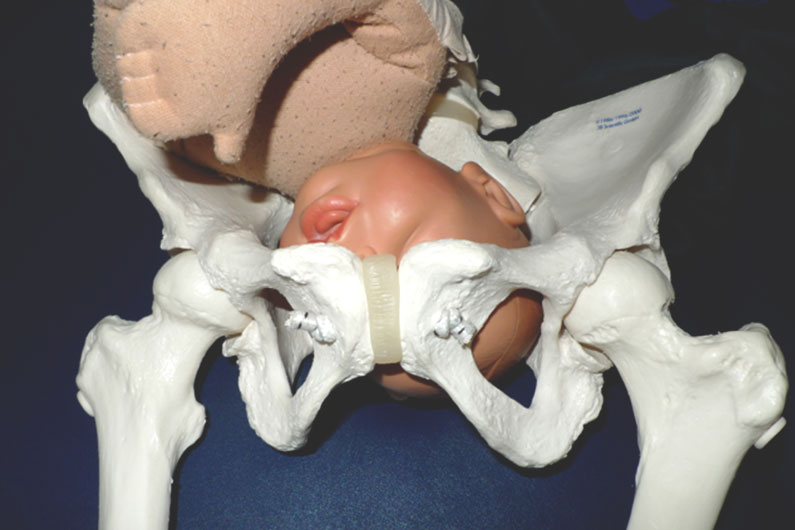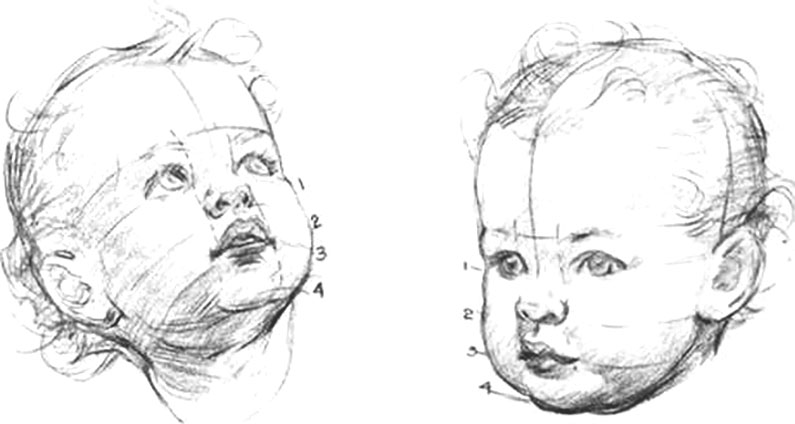
Last week I talked about the nurse or midwife learning the baby’s tipped presentation by the cervical exam. Thicker cervix into one side, the side the head remains deeper on. Thinner cervix shares the side that the head presses further out along. Below is an email I received from a doula asking for advice on how to find out if the baby is asynclitic:
[What Causes Asynclitism?] was an amazing answer to my questions… I got your training a few years ago in Montreal and now I have a team of 10 doulas working for me. The confidence and understanding of birth that I got from your training really put me in a position where I felt I could lead my colleagues and improve the birthing situation here. But I wondered… What other clues can I look for, knowing that I’m a doula with your training for professionals?
Having been a doula trainer for ten years, I enjoy sharing the clues with sister doulas. My midwifery background serves the provider mind, but the doula has a limited scope of practice. Doulas do not do vaginal exams.
Doulas do have the luxury of sustained presence at the side of each birthing person. They can tune their perception to the birth giver. This is more than watching quietly. It’s sensing with one’s own body. Scent, feel, sound. Micro-ripples of skin tension during a contraction. An observant person with time and no set assumptions can perceive movements in a nearly still person (or actively moving) and sense where movement flows and where it stops.

Dilation is typically rather speedy with an anterior baby who becomes asynclitic halfway through the pelvis. Then everything slows and pushing can be arduous and long. The labor can be long throughout for the posterior baby who sometimes begins labor with a tipped head. Pain may be one-sided, in the hip, and also may not be present but usually is.
In asynclitism, contractions meet more resistance on one side of the pelvis than the other. The contractions come strongly. There is not the energy dampening of emotional or psychological resistance that so many toss upon the mother as a reason for long labor. But there is an imbalance in the downward movement of the uterine surge and its effect through the body below the level of the upper uterine segment.
Doulas ask questions of the birth team. First, a doula is likely to ask the mother. What do you feel in your body with this contraction? (Or more kindly, with the contraction that just ended.) Where in your body do you feel moving joints and where do you feel resistance?
Doulas can ask the birth giver, “May your nurse, midwife or doctor share with me what they find out in the next cervical examination? The information might help us all choose a birth position.” Questions the doula might ask are:
Rarely a provider can find an ear… they are the providers with “piano fingers” – long fingers than can slip alongside a baby’s head to find the back of the ear where the cartilage is felt. The provider is very likely to say something about that if they can and if their fingers are not so long, it’s better not to reach so far to seek an ear.
In our workshops, we teach the solutions of Side-lying Release followed by a side-lunge or it’s adaption with a peanut ball if lying in bed. Doulas and parents can find the how to’s of this simple solution on our website.
Continuing with the doula scope of practice, we note the lack of diagnosis or a management protocol from the doula. The doula is not there to manage. Rather with gentle conversation, the doula can let the providers and the parents know what other parents have done to make room for the baby in these situations.
Sometimes the provider exam is not conclusive, or there hasn’t been an exam. The good news is we can try these two techniques and if they don’t work they also do no harm. (See when not to do Side-lying Release here.)
Can we know if baby is high? The baby may not even be asynclitic, but the slow down is due to the uterus calming after trying to engage baby into the pelvis. Then we’d suggest a position to open the top of the pelvis and realize baby wasn’t asynclitic after all.
A doula may only be guessing baby is asynclitic. An educated guess is not unusual in birth care among all the professions so don’t worry too much, just don’t be over-confident and settle for a favorite position that, nevertheless, doesn’t prove progress.
We don’t see the head and yet there aren’t signals that baby has not engaged and there is deep pelvic pressure to suggest baby may have engaged (in the absence of other posterior labor patterns in where and how the pressures are felt). We can try our midpelvis solutions (in the Quick Reference Guide).
Once labor has slowed down, matching the right position may be verified by the progress over a half dozen contractions. The baby will be moving down a bit more and the pain pattern equalizes. If nothing changes, try a new position from your best guess for which pelvic level to open.
Doulas can be astute in identifying asynclitic labors. It may take some experience before a sudden comprehension to bring the subtle signals together. But doulas are by nature a perceptive population. Turning down our own static noise, we perceive without judging, receive without dodging, and move to relieve with insight.
Further Reading:
Upcoming Workshops
[tribe_events_list limit=”4″]